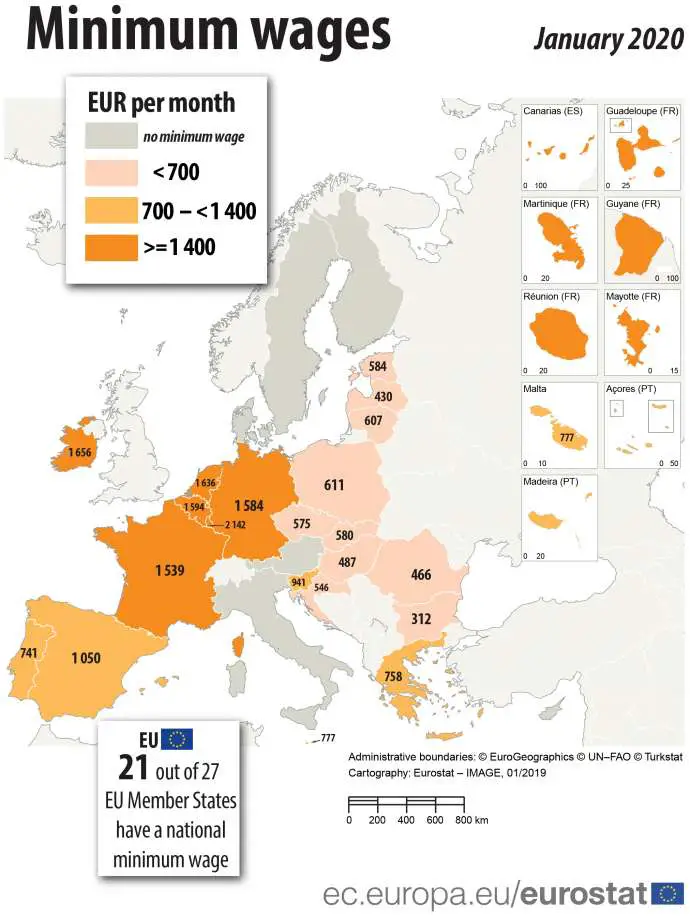STA, 22 August 2020 - The gap between the minimum and average wages in Slovenia stood at 50.6% in 2019, which made the country the EU member state with the narrowest gap, data from Slovenia's Institute of Macroeconomic Analysis and Development (IMAD) shows.
Since Slovenia introduced the minimum wage in 1995, legislation has been amended on several occasions changing the manner in which the minimum wage is set or raised.
In 1995-1997, it was generally harmonised in the same manner as the base pay in the private sector.
In the following period until 2003, a mechanism was introduced basing its increase not only on inflation but also on GDP growth in real terms.
In 2004-2005, the minimum wage was set in a nominal sum, and rose more than the average pay in the private sector but less than if pegged to GDP growth in real terms.
The anticipated inflation was meanwhile the only indicator to which the minimum wage was pegged in 2006-2009.
In 2010-2018, the minimum wage was pegged to inflation from the previous year, whereas pay and employment trends, and the general economic situation could also be taken into account.
Under the 2018 changes to the minimum wage law, the amount set as the minimum cost of living will also be taken into account in setting the minimum wage as of 2021.
Over the past 25 years there have been two major minimum wage raises, which have brought the minimum wage closer to the average salary.
The first kicked in in 2010, when it rose from EUR 593 gross to EUR 734, but companies allowed to complete the transition until the end of 2011.
The changes from 2018 brought the other major increase, to EUR 887 gross for 2019 and to EUR 940 for 2020.
Also, as of this year, all bonuses, for instance for night shifts or Sunday work, were excluded from the minimum wage.
They are now calculated not as part of the minimum wages but separately, which further raised the monthly pay of workers on the minimum wage.
As of next year, a new formula will kick in under which the minimum wage will have to exceeded the minimum cost of living by at least 20%, but not by more than 40%.
All these changes have resulted in a narrowing gap between the minimum and average wages; in 2000, the gap stood at 40.3%, at 45.4% in 2010 and at 50.6% last year.
What is more, minimum wage growth has exceeded productivity growth throughout the last decade.
Slovenia is one of 21 EU members states which have the minimum wage regulated in a law.
The ratio between the highest and lowest minimum wages in the EU-21 is roughly 1:7, or 1:3 if measured in purchasing power standards.
Luxembourg has the highest minimum wage in nominal terms and in purchasing power standards, with Bulgaria and Latvia at the bottom of the list, respectively.
In terms of purchasing power standards, Romania has seen the highest rise in the minimum wage in the past ten years.
Together with Portugal, Greece, Malta and Spain, Slovenia places in the middle group in terms of minimum wage growth. Last year, the minimum wage in the group ranged from EUR 700 to 1,050.
The ratio between minimum and average gross wages in the EU members which are also OECD members meanwhile ranged from 33.1% to 52%.
Here Slovenia topped the list with 50.6% in 2019, followed by France, while Greece had the widest gap to the average pay, IMAD said in its latest analysis of the minimum wage.






